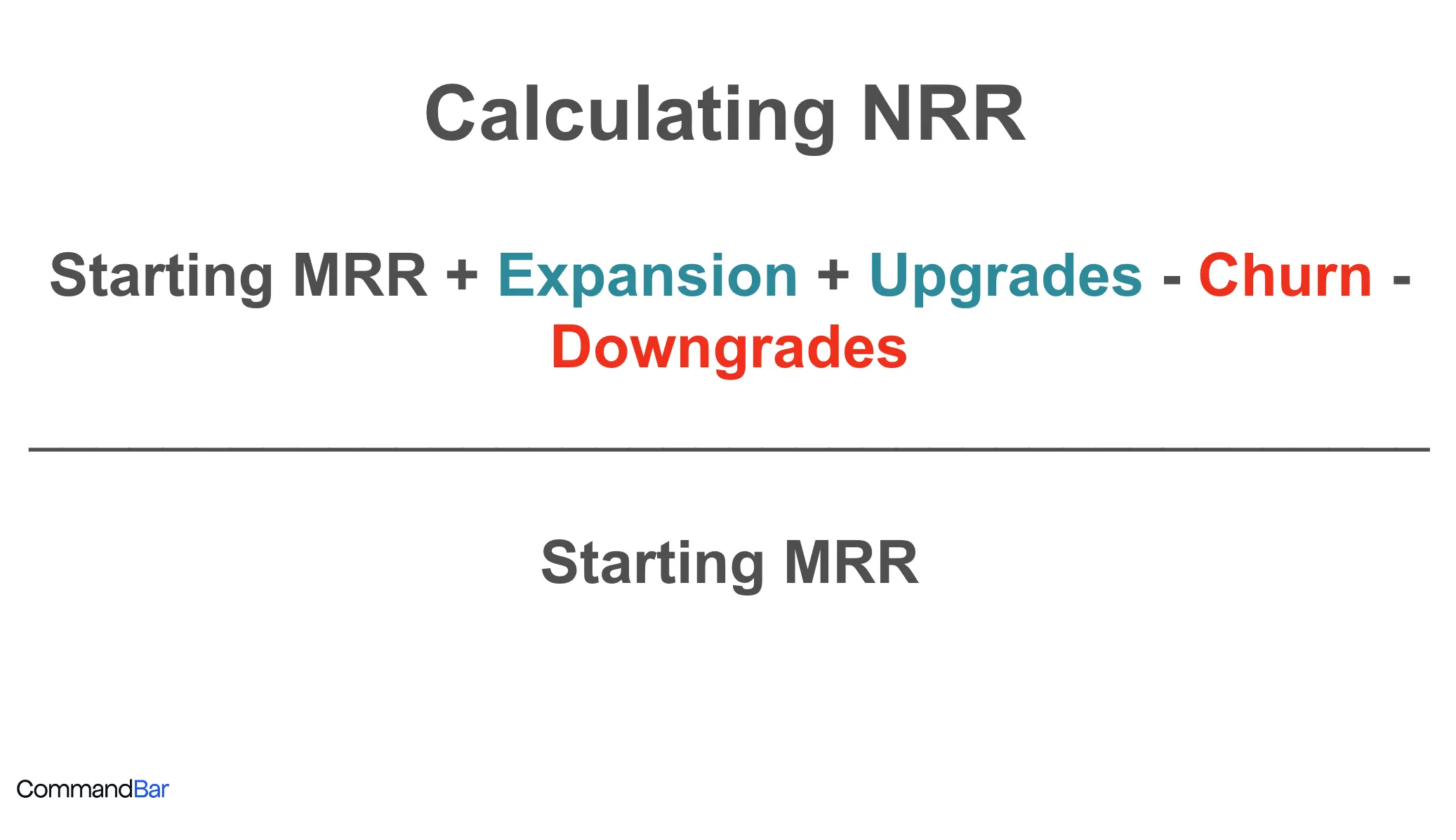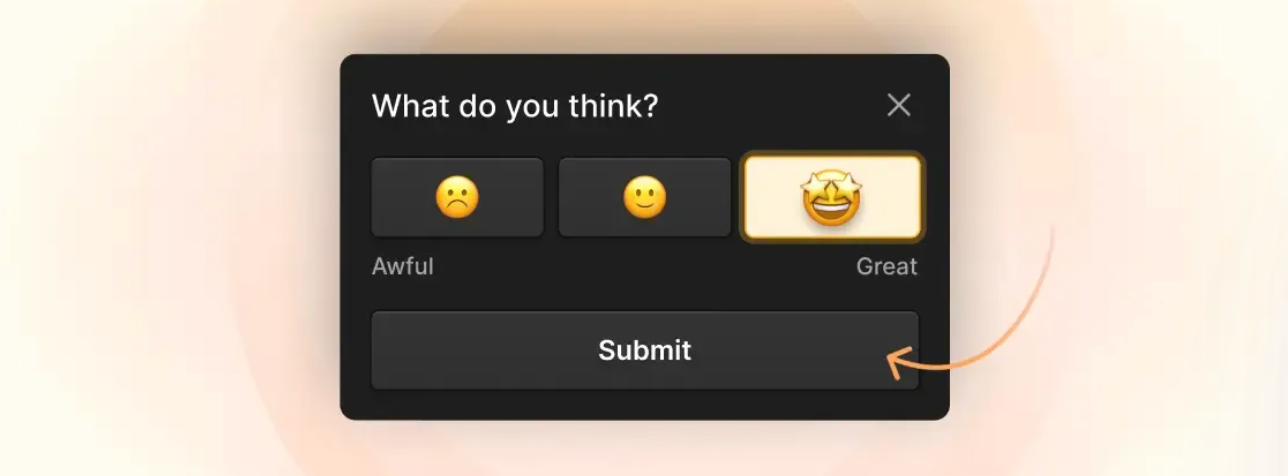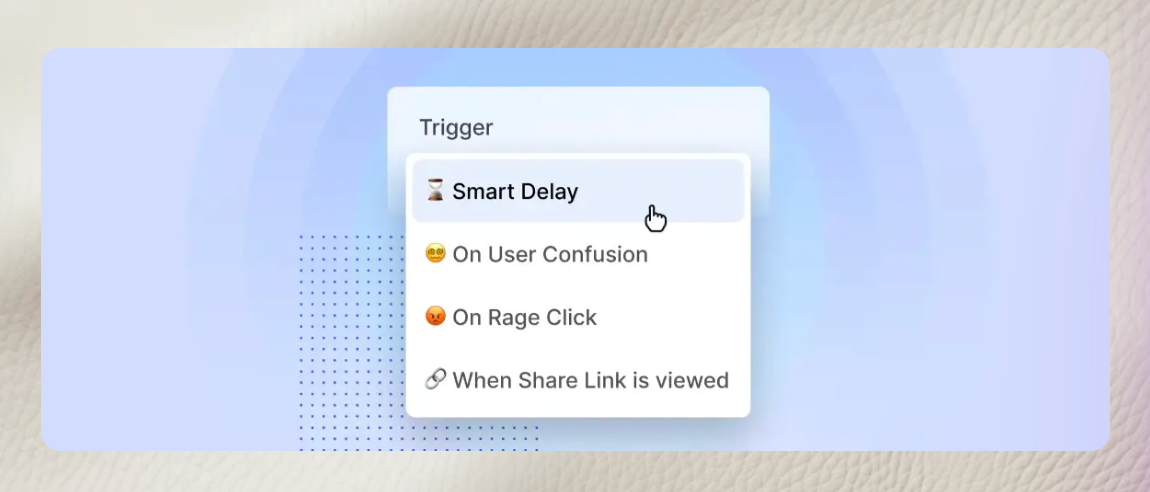If you have a SaaS business model, it's easy to hyperfocus on acquiring new customers. Do more marketing! Add another paywall! Get more upgrades!
But what if they only pay you for one month? Then you've spent a lot of effort on a tiny amount of revenue. That's why it's important for product people to understand the broader business/financial context.
Net revenue retention (which we’ll call NRR in this article) is a common financial gauge for the health of SaaS companies because it captures how well you are retaining your customer base and expanding your business.
But it’s an imperfect metric and not the only one that matters.
Let’s talk about what PMs and founders can learn from their net revenue retention rate and how they can improve it, plus, why they should sometimes look elsewhere for a different picture of the business.
What is net revenue retention?
Net retention rate measures customer loyalty and revenue retention, but with a twist. Unlike its cousin, churn rate, which only tells you who's leaving, NRR whispers the tales of both loss and gain – encompassing churn, upgrades, downgrades, and expansion!
It's a holistic view, much like watching a time-lapse of your customer's journey rather than a single snapshot.
Before we can calculate, we need to what composes net retention rate? Here’s a brief overview so you don’t get lost in a sea of jargon:
Churn 🔻
Definition: Churn represents the percentage of customers or the amount of revenue lost during a specific time frame due to customers discontinuing or downgrading their subscriptions.
Impact on NRR: Churn directly and negatively impacts NRR. High churn rates decrease NRR, as they represent a loss of revenue. This can be a sign of customer dissatisfaction or a product-market fit issue.
Expansion ⬆️
Definition: Expansion is the process by which existing customers contribute more revenue than they did previously. This could be due to upgrading to a more expensive subscription plan, purchasing additional products or services, or increasing their usage of the product in a way that incurs higher charges.
Impact on NRR: Expansion has a positive impact on NRR. It indicates that customers are finding value in the product or service, leading them to invest more in it. This additional revenue from existing customers can significantly boost NRR, helping to offset any losses from churn or downgrades. In many SaaS businesses, expansion revenue is a key growth driver, reflecting customer satisfaction and the product's ability to scale with customer needs.
Upgrades ⬆️
Definition: Upgrades occur when existing customers move to higher-tier subscriptions or add more features, resulting in increased spending.
Impact on NRR: Upgrades positively influence NRR. They indicate customer satisfaction and perceived value in the product, leading to an increase in revenue from existing customers. Successful upsells can offset the negative impact of churn on NRR.
Downgrades🔻
Definition: Downgrades happen when customers switch to lower-tier plans or reduce their usage, leading to decreased spending.
Impact on NRR: Downgrades have a negative impact on NRR, similar to churn but typically less severe. They indicate that customers are looking for less expensive options or do not find enough value in the higher-tier plans, reducing the overall revenue.
How to calculate your net revenue retention (NRR)
Calculating NRR takes a few steps:
- You start with your revenue from existing customers at the beginning of a period: MRR = monthly recurring revenue
- Now, add any upgrades or additional purchases (expansion.)
- Now, subtract downgrades and lost revenue from churn, and voilà – you have your NRR.
Here's an easy graphic to help!
Net revenue retention formula

What is a good net revenue retention rate?
Naturally, you might be wondering what a good or great NRR is! Without this knowledge, it would be hard to understand how you're performing. Let's dig into this by talking about SaaS NRR benchmarks
Net revenue retention benchmarks for SaaS products
Now I'll caveat this by saying that these rates can vary vertical or vertical, so take them with a grain of salt, but they are directionally correct.
Great NRR (Above 120%)
An NRR above 120% is exemplary in the SaaS industry. It reflects not only strong customer retention but also successful upselling and cross-selling, indicating a robust product-market fit. Companies achieving this level typically have high customer satisfaction and effective sales strategies, often positioning them as market leaders. This exceptional NRR suggests a loyal customer base that consistently finds increased value in the product offerings.
Good NRR (100% - 120%)
A good NRR, ranging between 100% and 120%, signifies a healthy business maintaining its revenue base. While there may be some churn, it is adequately compensated by revenue from upsells and expansions. This indicates a stable situation, but there is room for improvement, particularly in reducing churn and boosting upsell effectiveness. Companies in this range are generally on a positive track but should focus on strategies to move towards higher retention and expansion.
Meh NRR (90% - 100%)
NRR in the 90% to 100% bracket is a sign of moderate performance, implying challenges in retaining customers or in achieving significant upsells. It signals that while the company is not in a critical state, there are issues to be addressed. These may include enhancing product features, improving customer support, or adjusting market strategies. Businesses in this range need to identify and rectify these underlying challenges to prevent further slippage in customer retention and revenue.
Bad NRR (Below 90%)
Yikes! 😥 An NRR below 90% is concerning and indicates major problems within the business. This low percentage suggests a significant loss of revenue from existing customers, outpacing gains from upselling or expansions. It is a critical warning sign necessitating immediate and substantial strategic changes. Focus areas should include drastic improvements in customer retention tactics, product development, and reevaluating the product's market fit. Companies in this tier need urgent action to reverse the negative trend and stabilize their customer base and revenue.
So … why should I care about my net retention rate?
NRR's story is compelling because it goes beyond the surface. It doesn't just pat you on the back for customer acquisition like new leads and revenue metrics might; it challenges you to delve deeper into customer experience and value creation:
Are customers actually sticking around?
Are we good at upselling and avoiding churn, or do we seem to do only one well?
How do we stack up against industry standards or competitors?
These are the kind of questions you might be able to answer by monitoring both your NRR and its inputs over time.
For product managers it can be a directional gauge towards understanding the potential long-term success and sustainability of your product.
But what can you learn from different NRR rates?
What does a high net revenue retention rate mean?
If your NRR is above 100%, you’re likely crushing it!
A high NRR suggests that customers find value in the product, leading to expansions and upgrades. This is a clear signal that the product meets, or even exceeds, customer expectations and needs. You should continue to invest in your core areas and keep up the great work.
What does a low net revenue retention rate mean?
Conversely, a low NRR can highlight issues such as product gaps, unmet user needs, or dissatisfaction, which are critical areas for a PM to address.
Furthermore, NRR plays a central role in the sustainable growth and profitability of a SaaS business. It costs significantly less to retain and expand existing customer accounts than to acquire new ones.
Therefore, a strong NRR indicates efficient use of resources and a stable, growing revenue stream. This is especially important in the competitive SaaS market, where customer acquisition costs can be high, and customer loyalty is paramount.
Why NRR isn’t perfect
So, NRR is the holy grail of metrics - right?
Well, not exactly.
I’m not saying to ignore it, but it is important to qualify and understand it from another lens.
The balance between NRR and gross retention
You need to look at, compare, and understand both your NRR and gross retention rate (GRR) to understand your business.
GRR is a more simple metric. It measures the percentage of recurring revenue retained from existing customers over a certain period, excluding any upsell or expansion revenue. Thus, it is all about how you retain existing revenue without considering revenue gained from existing customers.

Let’s quickly analyze NRR vs. GRR for four different contexts:
Focus
NRR: NRR focuses on both retaining and expanding revenue from existing customers. It includes changes due to churn, upsells, cross-sells, and additional purchases.
GRR: GRR focuses solely on retaining the original revenue from existing customers, excluding any revenue from upsells or expansions.
Insight into customer behavior
NRR: Offers a comprehensive view of customer satisfaction and product value, indicating how well the company is growing its revenue per customer.
GRR: Provides insights into the company's ability to maintain its existing customer base and the stability of its core revenue.
Use cases
NRR: Particularly valuable for assessing overall customer satisfaction, effectiveness of upsell strategies, and the company's ability to increase its revenue from the existing customer base.
GRR: Crucial for understanding baseline revenue stability, especially important in businesses where upselling is not a major revenue component.
Indicator of health
NRR: A high NRR suggests strong customer retention, successful revenue expansion strategies, and a product that adapts well to customer needs.
GRR: A high Gross Retention rate indicates effective customer retention practices, reflecting the ongoing value customers find in the core product offerings.
How to use NRR and GRR — an example
Clearly, both NRR and GRR offer insight, but the GRR is more broad.
So why am I saying that you need to be careful about leaning into your NRR if it is clearly the more nuanced (and the more nuance, the better … right) metric?
Let's run through an example to demonstrate what I'm talking about.
Let's say you are running product for a small but growing task management SaaS business. You're both in the weeds with your product team gathering UX feedback and quantitative data AND measuring and analyzing your NRR and GRR with your leadership team.
You're using a tool like Command AI to run micro surveys. They are easy to build and less intrusive, giving you more accurate feedback and higher response rates.

Your CEO schedules time for you and the rest of leadership to talk about these two metrics. You prepped for the meeting, and after reviewing the strong NRR numbers and OK GRR numbers, feel pretty good. It's clear that product is retaining solid amount of users, and you're recently introduced AI features have led to a lot of upgraded subscriptions, which is great!
You go into the Zoom call, and quickly find out that is NOT how your CFO and CEO see things.
What do you learn?
A strong upsell motion can mask a churn problem with NRR. It turns out that despite the success of the new AI product leading to upgrades and therefore stronger revenue from a specific cohort of your existing customer base, you have been quietly churning a growing number of customers each month who no longer feel confident in the core products' ability to meet their needs as your competitors have improved and also reduced prices.
Because your new AI feature was strong, and your sales team is great with existing account upgrades, your NRR looked pretty damn good!
But when you took a look at your lower GRR in more depth, it became clear that you are bleeding business.
At the end of the day, if you’re losing a lot of logos, you probably don’t have strong PMF (just a good sales/upselling team).
The lesson: NRR is usually the more detailed metric, but don’t ignore GRR, and be particularly careful to monitor for “cancelling out” between churn and upsells.
Predicting NRR through feature engagement
It's not enough to simply know your NRR – wouldn't it be great to understand how to improve it through your product itself?
The ability to predict and influence Net Revenue Retention (NRR) is a key strategic advantage for any SaaS company, and one effective approach to achieving this is through monitoring and enhancing feature engagement. Feature engagement serves as a powerful proxy for customer satisfaction and product value, providing crucial insights into the health of customer relationships and potential revenue growth.
Feature engagement as a proxy
Your level of feature engagement is a strong indicator of a product's 'stickiness' – how integral or indispensable a product becomes to its users.
If folks are using multiple features, it’s likely they find your product valuable in general, and thus are less likely to churn.
Thus, “stickiness” is a critical factor in customer retention, a core component of NRR. Additionally, high engagement levels are often correlated with increased likelihoods of upselling. Engaged customers who find value in a product are more open to exploring premium features, leading to potential revenue expansion.
Naturally, you might be asking: how do I make my product more sticky and boost my NRR?
Strategies for driving engagement
There are several strategies that can effectively drive feature engagement. At Command AI, we break them into two buckets: user assistance and nudges.
User assistance
This approach involves actively helping users discover and connect with the most relevant features and use cases of the product.
The goal is to ensure that customers realize the maximum possible value from their investment. This can be achieved through personalized onboarding processes, detailed user guides, responsive customer support, and interactive tutorials.
You can go beyond these core DAP methods towards UAP, with a customized AI Copilot from Command AI which can hand-hold your user through their journey, and reduce support tickets, by allowing them to navigate their questions in text.
Plus, behind the scenes you can even get clarity using X-ray into why Copilot answered in a specific way. Together with the feedback you get from users this can help you improve your help documentation over time, creating better customer experiences!
X-ray vision 👀
By offering such unique user assistance, companies can significantly improve the user experience, making it easier for customers to understand and utilize the full range of functionalities offered.
This understanding and utilization are key to ensuring customer satisfaction, reducing churn, and even opening pathways to upselling, as customers who are well-versed in the product's capabilities are more likely to explore advanced features or higher-tier services.
Nudges
Nudges represent another proactive approach to driving feature engagement, playing a vital role in improving NRR.
This strategy involves sending users tailored suggestions for new use cases or features based on their behavior and preferences.
But forget the deluge of broad pop-ups and blanket targeting 🤡.
The effectiveness of nudges lies in their personalization and relevance; they must feel helpful and timely, rather than intrusive. By analyzing user data and behavior patterns, companies can identify opportunities to introduce users to features they haven't tried but are likely to find valuable.
For example you can incorporate smart triggers, based off of real user behavior in Command AI.

These nudges can take various forms, such as in-app messages, emails, or even prompts within the user interface.
When executed correctly, they encourage users to deepen their engagement with the product, exploring and adopting features that enhance their experience and satisfaction. This increased engagement not only bolsters customer retention but also opens up opportunities for upselling, as users become more invested in the product ecosystem.
A final thought about (and a secret way to boost) your NRR
It's clear that both NRR and GRR can be useful metrics to analyze, and that it’s best practice to monitor and compare both. Plus, you can go beyond monitoring, and try to actively improve your NRR with both user assistance tactics and tactful nudges.
But we can level that up one final way: intent data.
When you have a tool like Copilot or Spotlight search, your team will gather a ton of intent data. From key questions to dead ends revealed to frustration and roadblocks, you can have a ton of qualitative, “human language” data at your fingertips.
This can be massively helpful in identifying gaps and issues in your product which could lead to churn. By fixing the most common frustrations, dead end patterns, and other blockers that your users voice in text, you’ll please them and avoid contraction.
Plus, if you see new feature requests or desires signaled through these tools, you can add them to the roadmap and improve your future chances of retention and upselling.
Ultimately, I'd recommend you worry less about what your NRR is exactly right now, and more about how you can gather the best possible data and feedback to improve your product, and thus your reporting metrics, in the long-run with user assistance strategies.

















